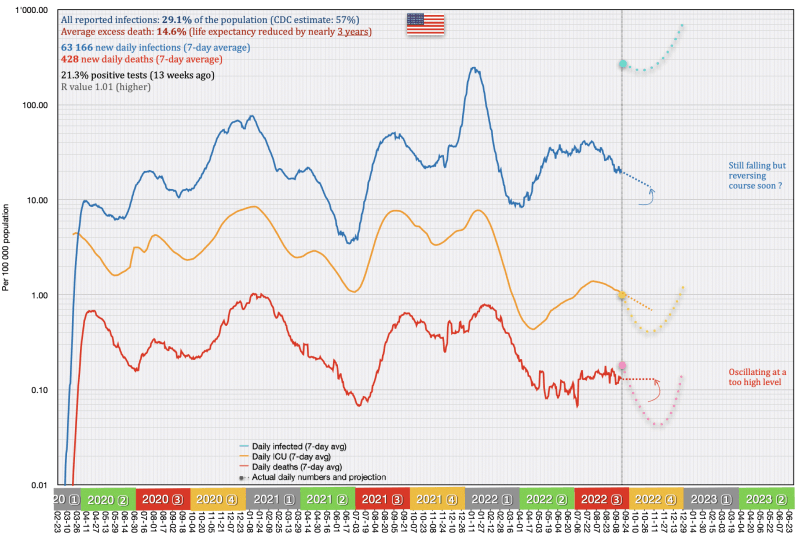 USA – 16 September
USA – 16 September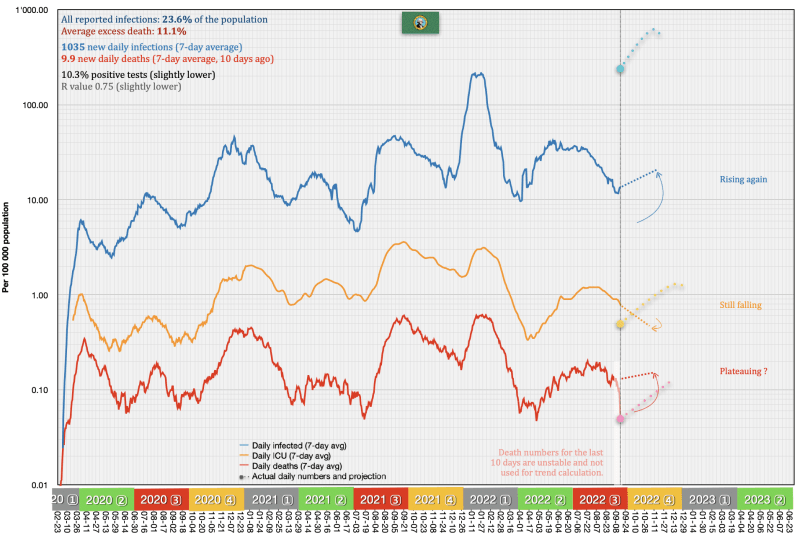 Washington State – 16 September
Washington State – 16 September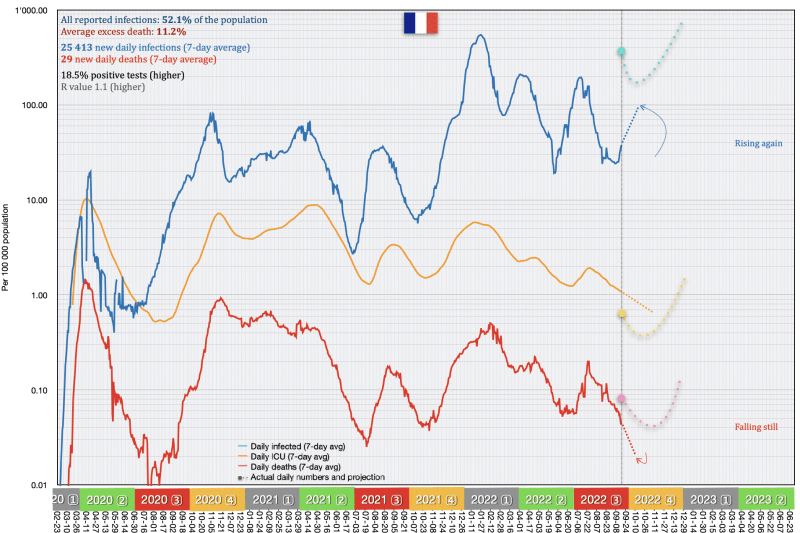 France – 16 September
France – 16 September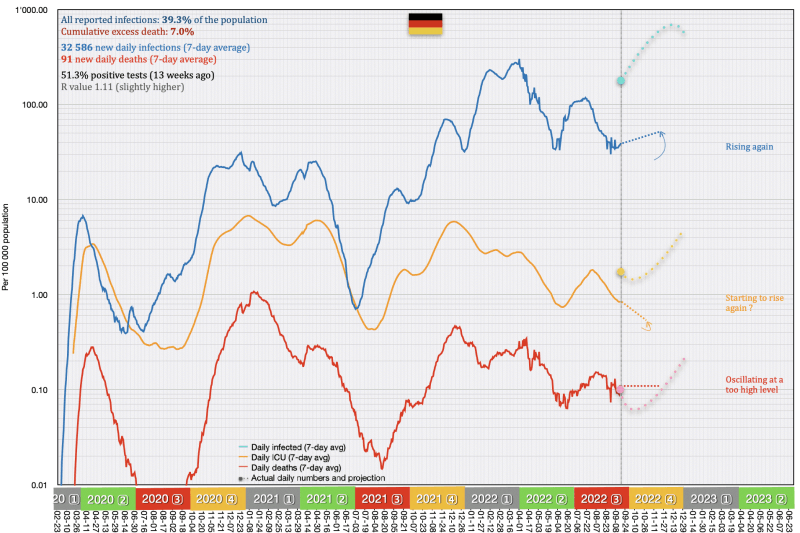 Germany – 16 September
Germany – 16 September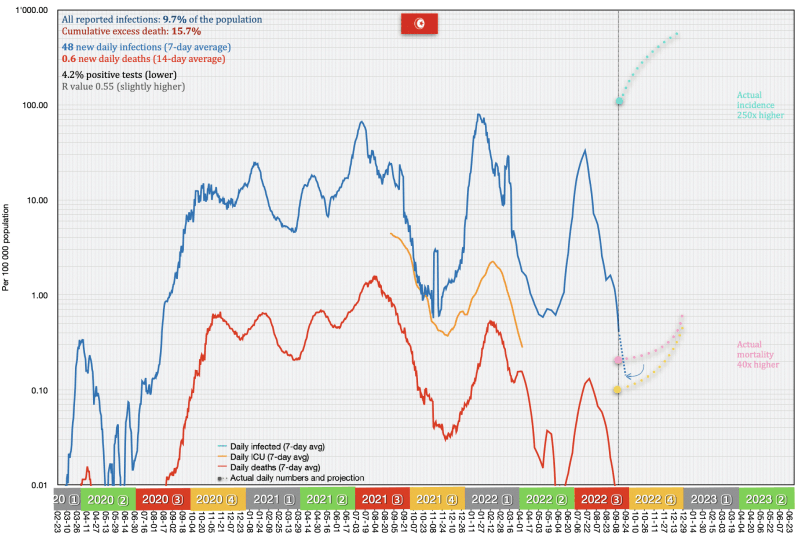 Tunisia – 12 September
Tunisia – 12 September Testing Rates – 16 September
Testing Rates – 16 September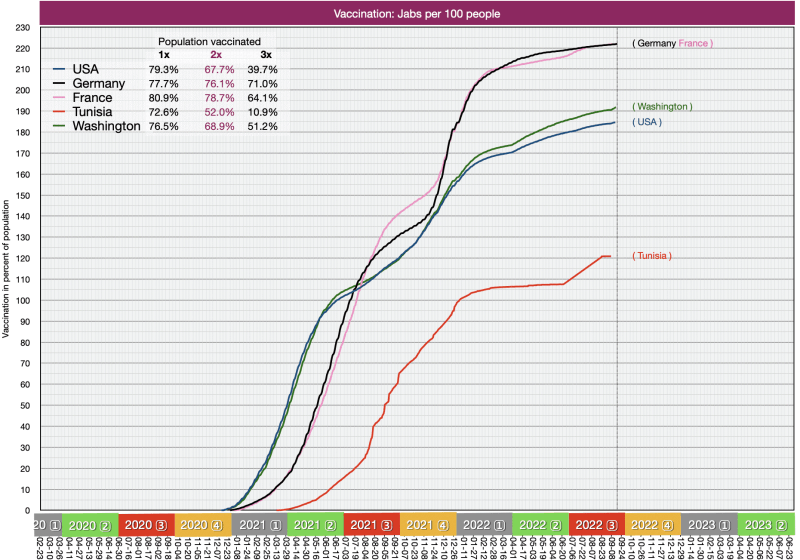 Vaccinations (Cumulative) – 16 September
Vaccinations (Cumulative) – 16 September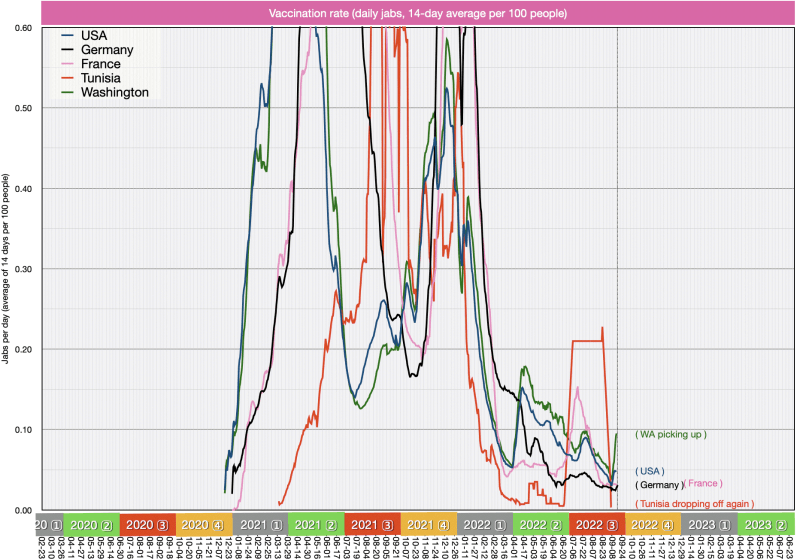 Vaccinations (jabs) per day – 16 September
Vaccinations (jabs) per day – 16 September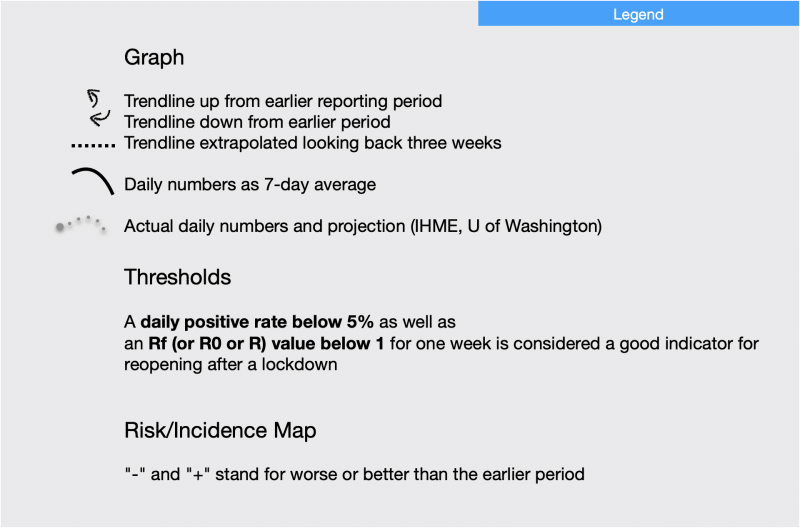 Legend
LegendWHO: End In Sight But We Are Not There Yet
Meanwhile, incidence is increasing or slated to do so
The press might have shortened the WHO's statement a little (such as Al Jazeera, CNN, Seattle Times, the German tagesschau, but unlike the BBC and kind of Le Monde) and therefore I am putting the missing part here again: WE ARE NOT THERE YET. In fact, if we were to act as if the pandemic were over and stopped the preventive measures, the pandemic will certainly continue. And then other, potentially more dangerous variants could emerge (such as currently the BA.2.75 variant in India - see Times of India) and our economies would need to be subsidised with billions of dollars more. In particular the WHO recommends that vaccination of the vulnerable groups, the elderly, the health care workers and the chronically ill, should to get to 100%.
Germany and France see a rising incidence but in France, mortality continues to drop while it is rising in Germany.
In the USA incidence decreases still but mortality remains stubbornly at a too-high level. Washington State's incidence is rising (remaining closer to Western Europe as it has before) and its mortality is stagnating at a too-high level. Tunisia is clearly the odd one out. Its numbers are exceptionally low and with a test-positive rate of below 5%, one could assume that these numbers are correct. Predicted real numbers are much higher, comparable to those in the USA.
| Daily Incidence | Daily ITU / ICU | Daily Deaths | Daily Pos. Rate | Cumulative Excess Death | Mortality Projection | |
|---|---|---|---|---|---|---|
| USA | 19.2 ↘︎ | 1.1 ↘︎ | 0.130 → | 21.3% | 14.6% | ↘︎↗︎ |
| WA State | 13.6 ↗︎ | 0.8 ↘︎ | 0.129 ↗︎ | 10.3% ↘︎ | 11.1% | ↗︎ |
| France | 37.9 ↗︎ | 1.1 ↘︎ | 0.043 ↘︎ | 18.5% ↑ | 11.2% | ↘︎↗︎ |
| Germany | 39.2 → | 0.8 ↘︎ | 0.109 ↗︎ | 51.3% | 07.0% | ↘︎↗︎ |
| Tunisia | 00.4 ↘︎ | 0.005 ↓ | 04.2% ↓ | 15.7% | ↗︎ |
As mentioned above, the WHO has issued a report on the future course of the COVID-19 pandemic. At the same time, on 14 September, the Lancet Commissions published a paper on lessons for the future from the COVID-19 pandemic (PDF).
To cite the beginning: "This staggering death toll is both a profound tragedy and a massive global failure at multiple levels. Too many governments have failed to adhere to basic norms of institutional rationality and transparency, too many people—often influenced by misinformation— have disrespected and protested against basic public health precautions, and the world’s major powers have failed to collaborate to control the pandemic."
These words resonate well with what I have been saying in this blog and so do the authors' key findings:
So far so good. In preparedness for future pandemics (and for the remainder of the current one), the panel further recommends